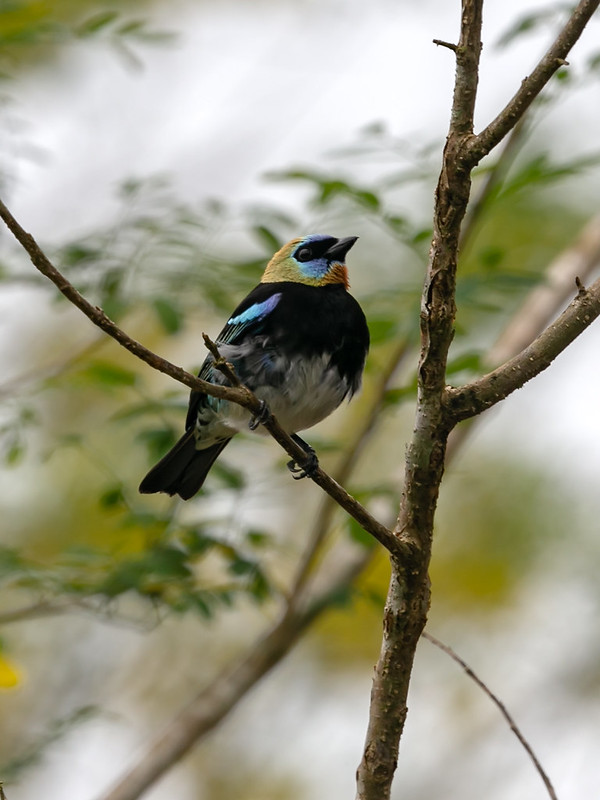His Head And Crown A Glowing Shimmering Gold, His Body A Beautiful Blend Of Blue, Violet, And Emerald Green, Some Say No Other Bird Comes Close.
Meet the Golden-hooded tanager.

Both males and females are about 13 cm 95.1 in) long and are around 19 g (0.67 oz) in weight. The adult male has a golden head with a black eye mask edged with violet-blue above and below. The upper parts of the body are black apart from the turquoise shoulders, rump, and also along with the edgings of the wings and tail. The flanks are blue and the central belly is white.

Females differ from the males in that they have a greenish tinge to the head, sometimes with black speckling on the crown, and more extensively white underparts.
Juveniles are duller, with a green head, dark grey upperparts, off-white underparts, and little blue in their plumage.

The Golden-hooded tanager’s call is a sharp tit-tit and the song is a tuneless rattled series of tick sounds.

These birds live from sea level up to 1,500 m (4,900 ft) in altitude, preferring the canopy of dense forests and semi-open areas such as clearings, secondary growth, and well-vegetated gardens.

They eat small fruit, usually swallowed whole, and insects. However, being primarily frugivores, their main diet is the small fruit Trophis racemosa (Moraceae).

Golden-hooded tanagers occur in pairs, family groups, or as part of a mixed species of feeding birds.

A cup nest is built in a tree fork or in a bunch of green bananas, and the normal clutch is two brown-blotched white eggs. This species is often double-brooded, and the young birds from the first clutch assist with feeding the second brood of chicks.

Populations of this bird are considered stable, and the IUCN lists the Golden-hooded Tanager as a species of “Least Concern.”